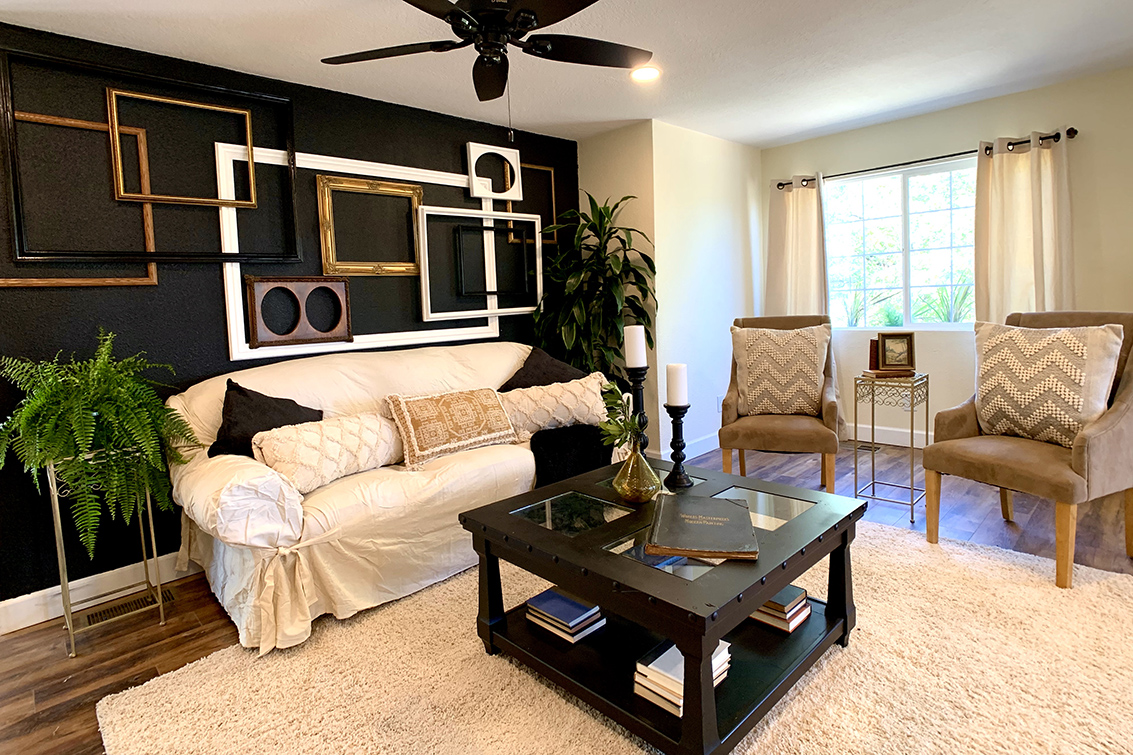Have you ever thought about being an interior designer? With HGTV and the Magnolia Network making design such a hot topic, it seems a lot of people are asking, “Do I have what it takes to be an interior designer?”
Let’s answer that by asking a few more questions:
- Do you think you can coax dull and lifeless dark and dingy rooms out of despair and find beauty in them again?
- Can you create designs that command the attention of others and offer a memorable experience?
- Are you able to think creatively to design a more marketable product?
- Do you keep things organized, use your time well and manage your money?
An Expression of Yourself
 As you consider whether you have what it takes to be an interior designer, you must understand who you are.
As you consider whether you have what it takes to be an interior designer, you must understand who you are.
Movies and television shows often characterize interior designers as flamboyant and over the top. There is actually a lot of merit to this characterization. Being able to create big, bold, beautiful designs comes from having confidence. In many ways, designing interiors is an extension of yourself. That’s why you can often identify which designer created a work simply by looking at it
Too often, however, a designer’s “look” can be repetitive, flat, and lifeless. That’s not because of their lack of knowledge about interior design. When that happens, it’s the result of not working from a state of confidence during the design process. Great designs come from within a person. Being able to open up and be expressive is a huge part of being a great designer.
Of course, there are foundational principles of interior design that all designers must know and understand. But because design is an art, forming a balance between what a designer is taught and feels must come together in a way that the result looks like it fell into place naturally.
Envisioning the Possibilities
Walking into a dull, dingy, lifeless house can send your mind reeling. You may have concerns about whether you can fix something that appears to be unfixable.
Yes, some interiors will take your breath away because they are in such desperate need of help. Some are to the point of being unlivable in their current shape. However, many times these homes will more than likely turn out to be the most beautiful after their transformation.
The moment you set eyes on such a project is the moment you must start working to move past what’s in front of you. Many designers can’t stomach this part of being a designer. Yet if you wish to be an interior designer, this stage of the process is where you need to be able to see past the current condition and be able to envision what the interior could look like.
Stretching Your Limits With Design Elements
 Being able to capture people’s attention brings us back to the need for interior designers to be confident. Being brave enough to stretch your limits and create “drama” within properties can often stretch your comfort zone.
Being able to capture people’s attention brings us back to the need for interior designers to be confident. Being brave enough to stretch your limits and create “drama” within properties can often stretch your comfort zone.
But, most of the time, memorable designs are unique designs that have never been tried before. Having the patience to educate yourself and to understand how design elements work together—color, shape, space, form, value, line, and texture—is invaluable for creating the most unique visual experience possible. These elements help support your creative ideas; they help to convey a mood you may be trying to achieve. They work to draw your eye in, or even away from objects. They can even be used to control a person’s feelings. Studying the design elements and learning to apply them is just one more step in the process towards becoming an interior designer.
 Being meticulous with detail is also necessary if you wish to be an interior designer. It is the interior designer who will often bring a sense of organization to any project. Projects will feel more cohesive under the control of a designer.
Being meticulous with detail is also necessary if you wish to be an interior designer. It is the interior designer who will often bring a sense of organization to any project. Projects will feel more cohesive under the control of a designer.
Because they have a keen understanding of how important detail is, interior designers should be able to control a project’s specifications and timelines better than most. Because there are so many moving parts for an interior design project, designers should be able to control where to spend more money and where spending should be cut. Designers need to stay one step ahead of the project, always dealing with a timeline. They also must have a very keen sense for dimensions, which can make or break a project in regard to cost, time, and the overall finished look.
As you can see, designers wear many different hats—many that you don’t see on TV. So much goes into the design process that having confidence is the foundation to being a great designer.
Take time to understand yourself, your strengths, and your weaknesses. Doing so will help you better confirm whether being an interior designer is the right career for you. If you remember to believe in yourself and what you’re creating, your designs will provoke a sense of confidence and be enjoyed by all who view them.
Michele Van Der Veen is host of Good Day segments, including Flip It, Decorate Like a Designer, and Stage to Sell. She started her career in real estate investing more than 30 years ago.
A published author, Van Der Veen has been recognized and featured in international magazines for her unique approach to interior design. Acquiring a formal education from the Interior Designers Institute of California, her experience stems from building custom homes to flipping more than 100 homes and working in commercial real estate development alongside her father at a young age. Not afraid to push the limit on her own designs and investments, Van Der Veen will often be heard reassuring her team about her decisions by saying “Don’t worry, we are the comps!”
For more on Van Der Veen’s work or to contact her, visit iHeartHomescorp.com.
























0 Comments